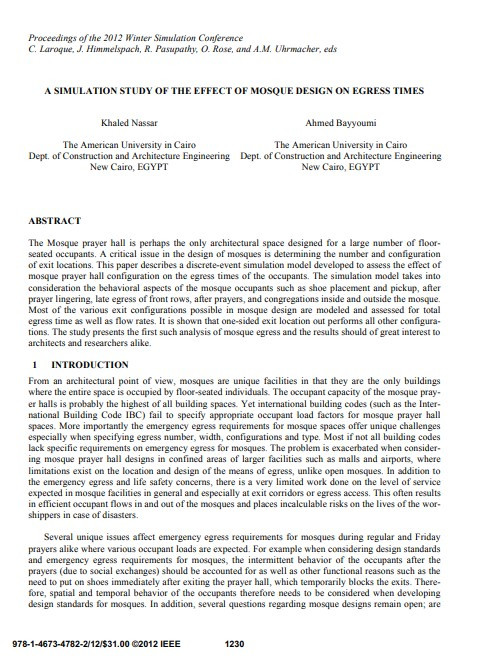
The Mosque prayer hall is perhaps the only architectural space designed for a large number of floorseated occupants. A critical issue in the design of mosques is determining the number and configuration of exit locations. This paper describes a discrete-event simulation model developed to assess the effect of mosque prayer hall configuration on the egress times of the occupants. The simulation model takes into consideration the behavioral aspects of the mosque occupants such as shoe placement and pickup, after prayer lingering, late egress of front rows, after prayers, and congregations inside and outside the mosque. Most of the various exit configurations possible in mosque design are modeled and assessed for total egress time as well as flow rates. It is shown that one-sided exit location out performs all other configurations. The study presents the first such analysis of mosque egress and the results should of great interest to architects and researchers alike.
Nassar, Khaled, and Ahmed Bayyoumi. “A simulation study of the effect of mosque design on egress times.” In Proceedings of the 2012 Winter Simulation Conference (WSC), pp. 1-8. IEEE, 2012.
I agree to the terms outlined below:
You agree to upload and assign Mosqpedia Database the rights to use the content worldwide and in perpetuity across all current and future media platforms. Mosqpedia Database may edit, copy, adapt and translate your contribution.
The content will be distributed under the Creative Commons Attribution-Deed – Attribution-NonCommercial-NoDerivatives 4.0 International – Creative Commons
All data will be stored in line with data protection regulations.